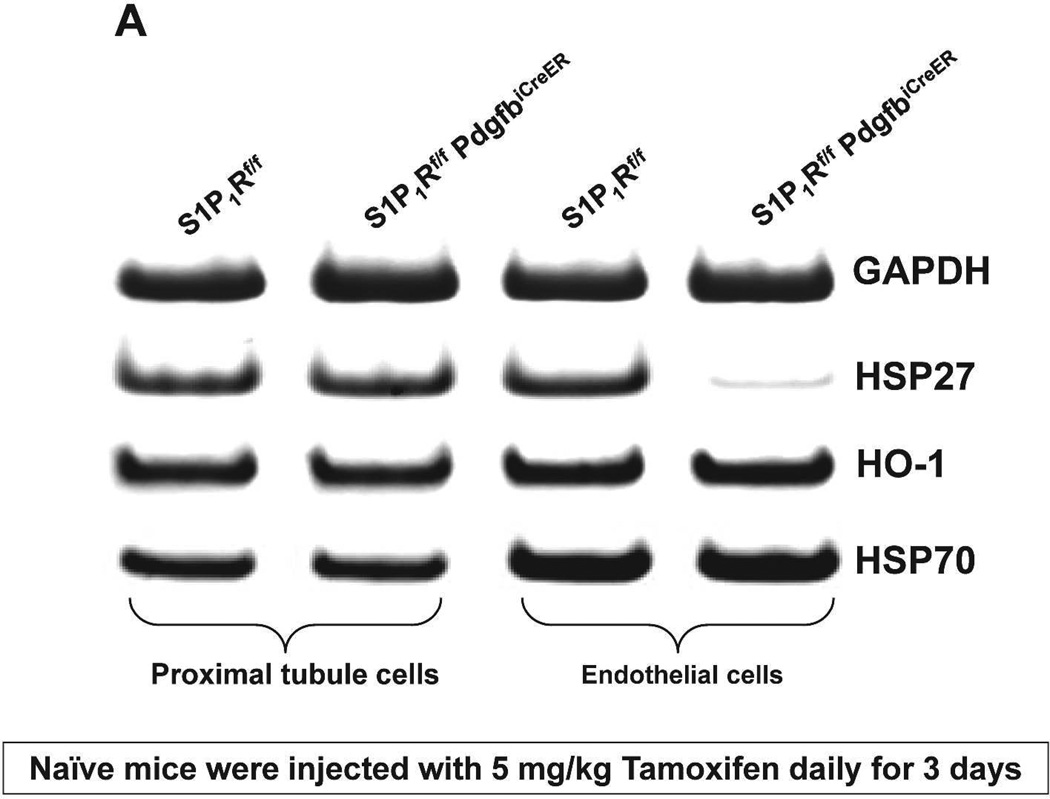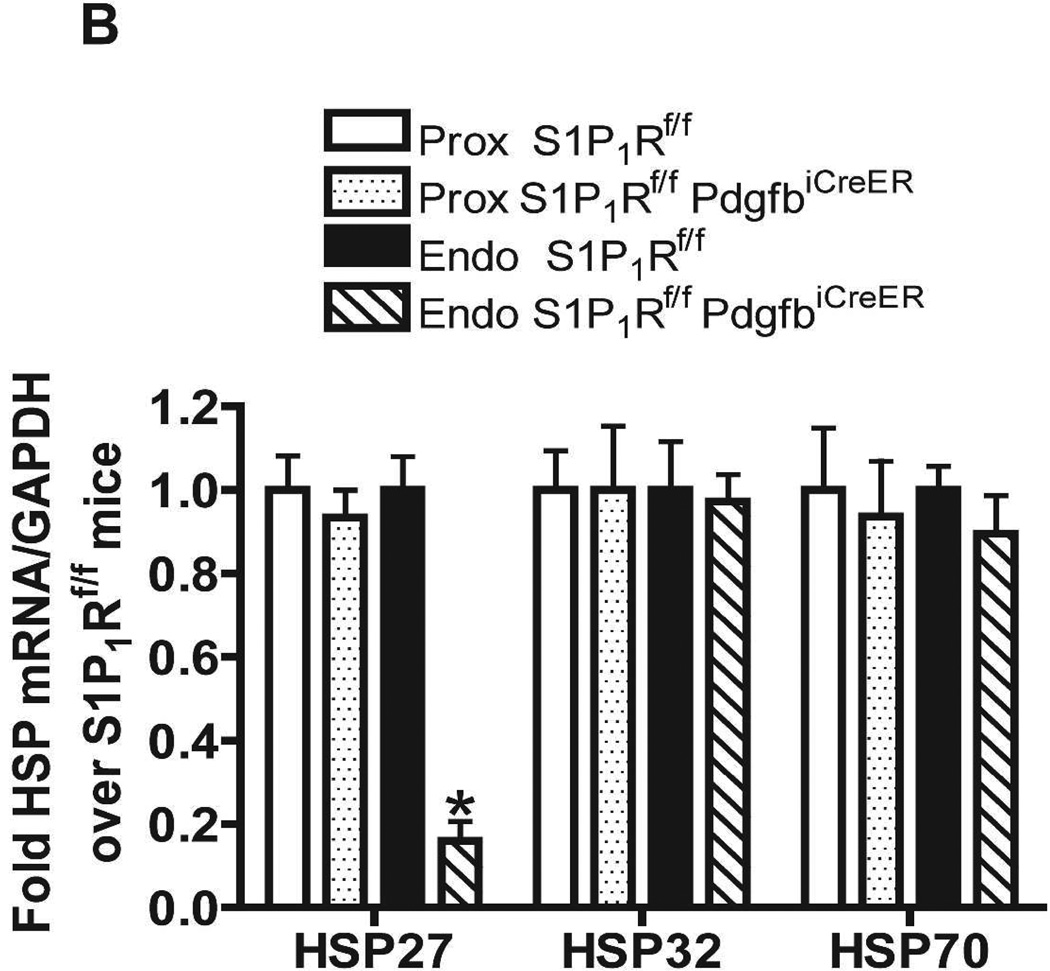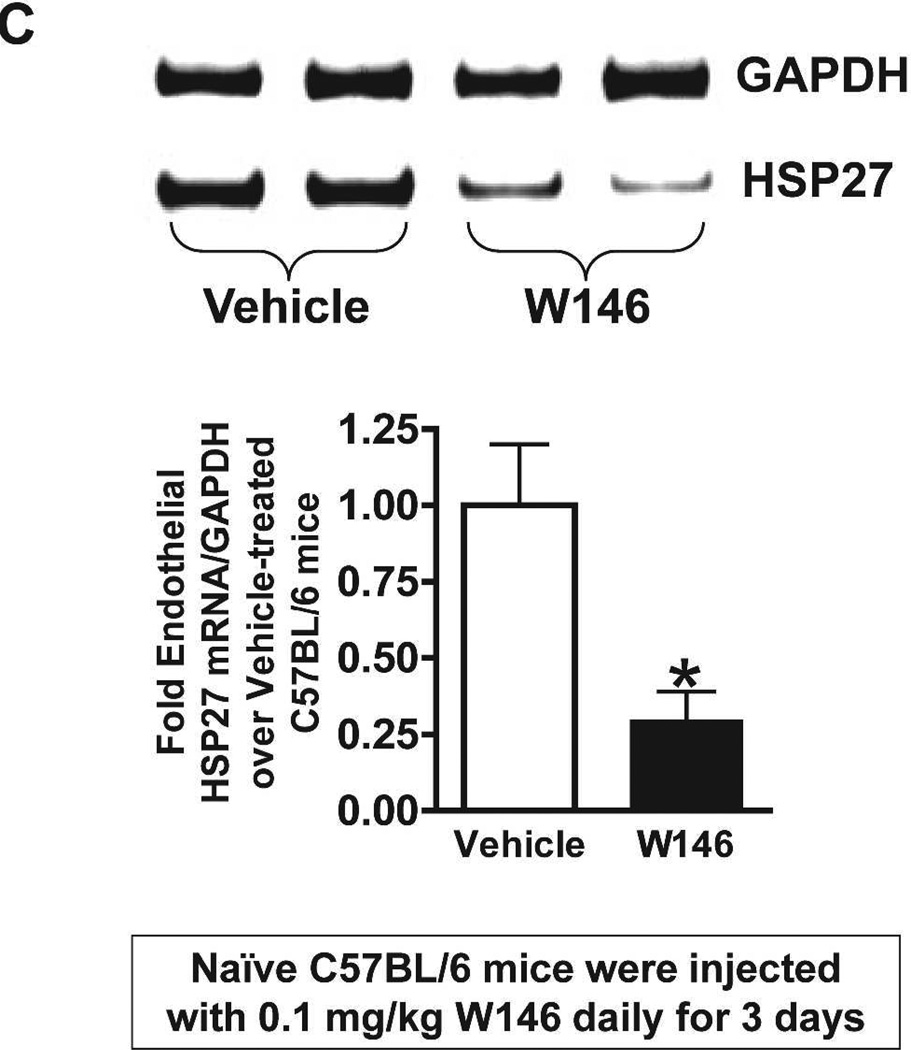Figure 9. Endothelial S1P1R deficiency or chronic S1P1R blockade decreases endothelial HSP27 mRNA expression in mice.
Representative gel images of RTPCR (A) and densitometric quantification of relative band intensities normalized to GAPDH (B) of HSP27, HO-1 (HSP32) and HSP70 mRNA expression in freshly isolated endothelial and proximal tubule cells from conditional endothelial S1P1R null mice or from wild type (S1P1Rf/f) mice. Renal endothelial cells from endothelial S1P1R null mice express significantly reduced HSP27 mRNA compared wild type mice without any changes in HO-1 or HSP70 expression. Furthermore, we show that HSP27, HSP32 and HSP70 mRNA levels in freshly isolated proximal tubule cells were similar between endothelial S1P1R null mice and wild type mice. C and D. Representative gel images of RTPCR (top) and densitometric quantification of relative band intensities normalized to GAPDH (bottom) of HSP27 mRNA expression in freshly isolated endothelial cells from C57BL/6 mice treated for 3 days (C) or for 1 hr (D) with vehicle or with W146 (a selective S1P1R antagonist, 0.1 mg/kg). S1P1R antagonist treatment significant reduced endothelial HSP27 expression only after treatment for 3 days with W146 (C). W146 treatment for 1 hr had no effect on endothelial HSP27 expression (D). *P<0.05 vs. wild type (S1P1Rf/f) mice or vehicle-treated C57BL/6 mice.



